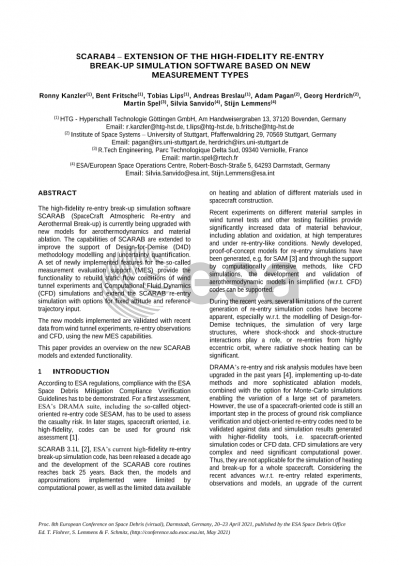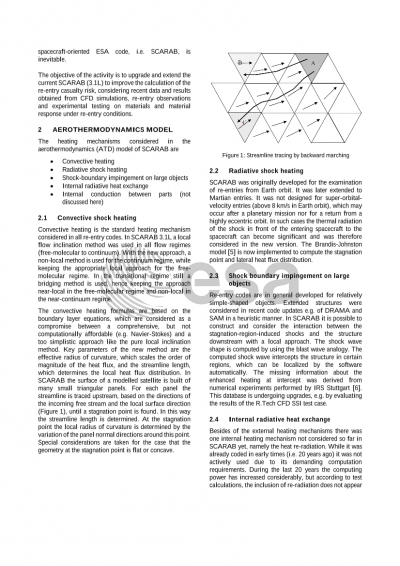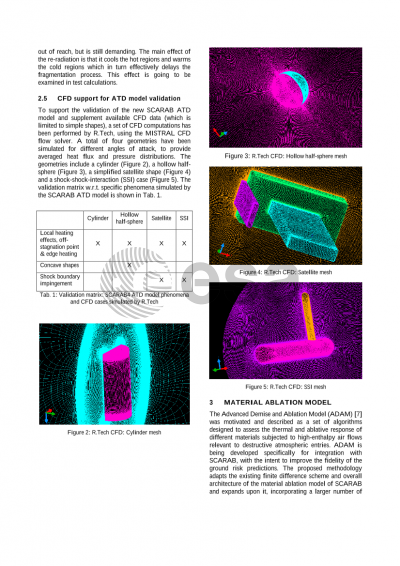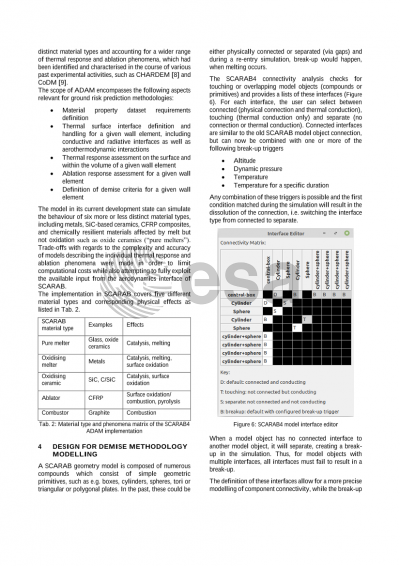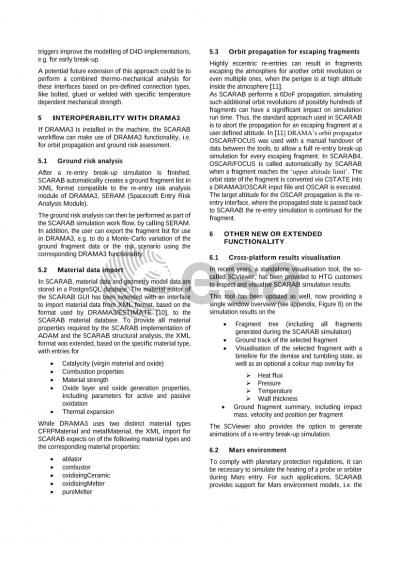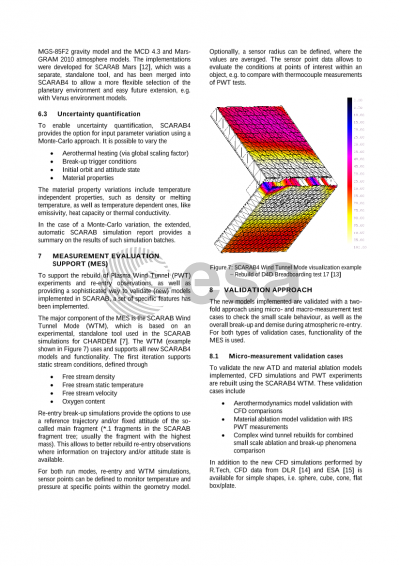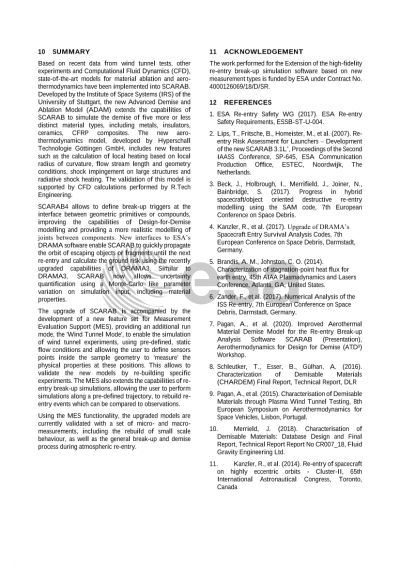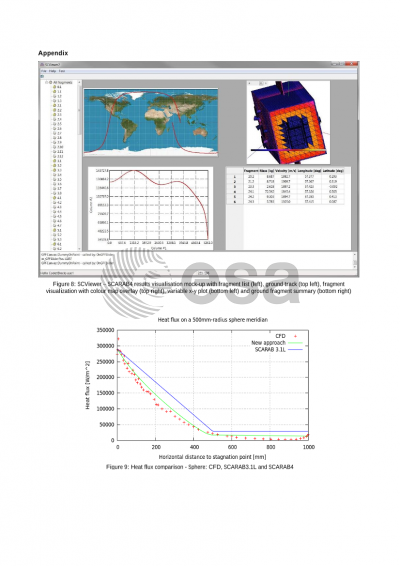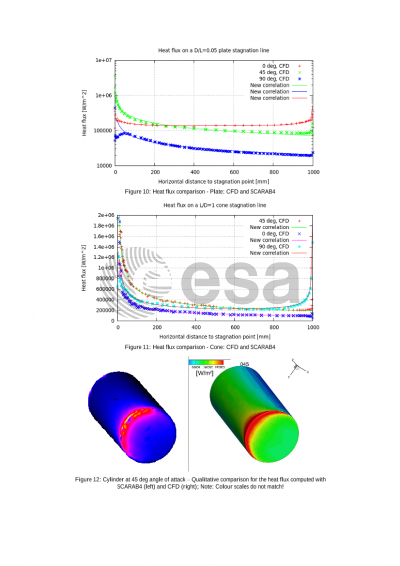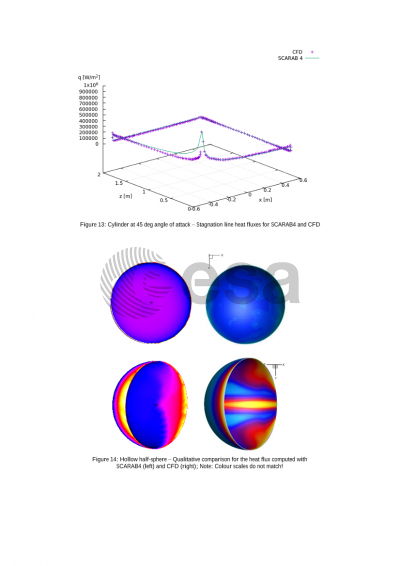Document details

Abstract
According to ESA regulations, compliance with the ESA Space Debris Mitigation Compliance Verification Guidelines has to be demonstrated. For a first assessment, ESA’s DRAMA suite, including the so-called object-oriented re-entry code SESAM, has to be used to assess the casualty risk. In later stages, spacecraft oriented, i.e. high-fidelity, codes shall be used for ground risk assessment.
SCARAB 3.1L, ESA’s current high-fidelity re-entry break-up simulation code, has been released a decade ago and the development of the SCARAB core routines reaches back 25 years. Back then, the models and approximations implemented were limited by computational power, as well as the limited data available on heating and ablation of different materials used in spacecraft construction.
The objective of the activity, under ESA Contract No. 4000126069/18/D/SR, is to update and extend the current SCARAB (3.1L) to improve the calculation of the re-entry casualty risk, considering the recent data and results obtained from CFD simulations, re-entry observations and experimental testing on materials and material response under re-entry conditions.
To achieve this, new models for material ablation and aero-thermodynamics have been implemented based on recent data from wind tunnel tests, other experiments and Computational Fluid Dynamics (CFD). Developed by the Institute of Space Systems (IRS) of the University of Stuttgart, the new Advanced Demise and Ablation Model (ADAM) extends the capabilities of SCARAB to simulate the demise of six more or less distinct material types, including metals, insulators, ceramics, CFRP composites and more. The new aero-thermodynamics model, developed by Hyperschall Technologie Göttingen GmbH, includes new features such as the calculation of local heating based on local radius of curvature, flow stream length and geometry conditions, shock impingement on large structures and radiative shock heating. The validation of this model is supported by CFD calculations performed by R.Tech Engineering.
SCARAB 4 allows to define break-up triggers at the interface between geometric primitives or compounds, improving the capabilities of Design-for-Demise modelling and providing a more realistic modelling of joints between components. New interfaces to ESA’s DRAMA software enable SCARAB to quickly propagate the orbit of escaping objects or fragments until the next re-entry (via DRAMA3/OSCAR) and calculate the re-entry risk via DRAMA3/SERAM using the recently upgraded capabilities of DRAMA3. Similar to DRAMA3, SCARAB now allows uncertainty quantification using a Monte-Carlo like parameter variation on simulation input.
The upgrade of SCARAB is accompanied by the development of a new feature set for Measurement Evaluation Support (MES), providing an additional run mode, the 'Wind Tunnel Mode', to enable the simulation of wind tunnel experiments, using pre-defined, constant flow conditions and allowing the user to define sensors points inside the sample geometry to 'measure' the physical properties at these positions. This allows to validate the new models by re-building specific experiments. The MES also extends the capabilities of re-entry break-up simulations, allowing the user to perform simulations along a pre-defined trajectory, to rebuild re-entry events which can be compared to observations.
Preview
